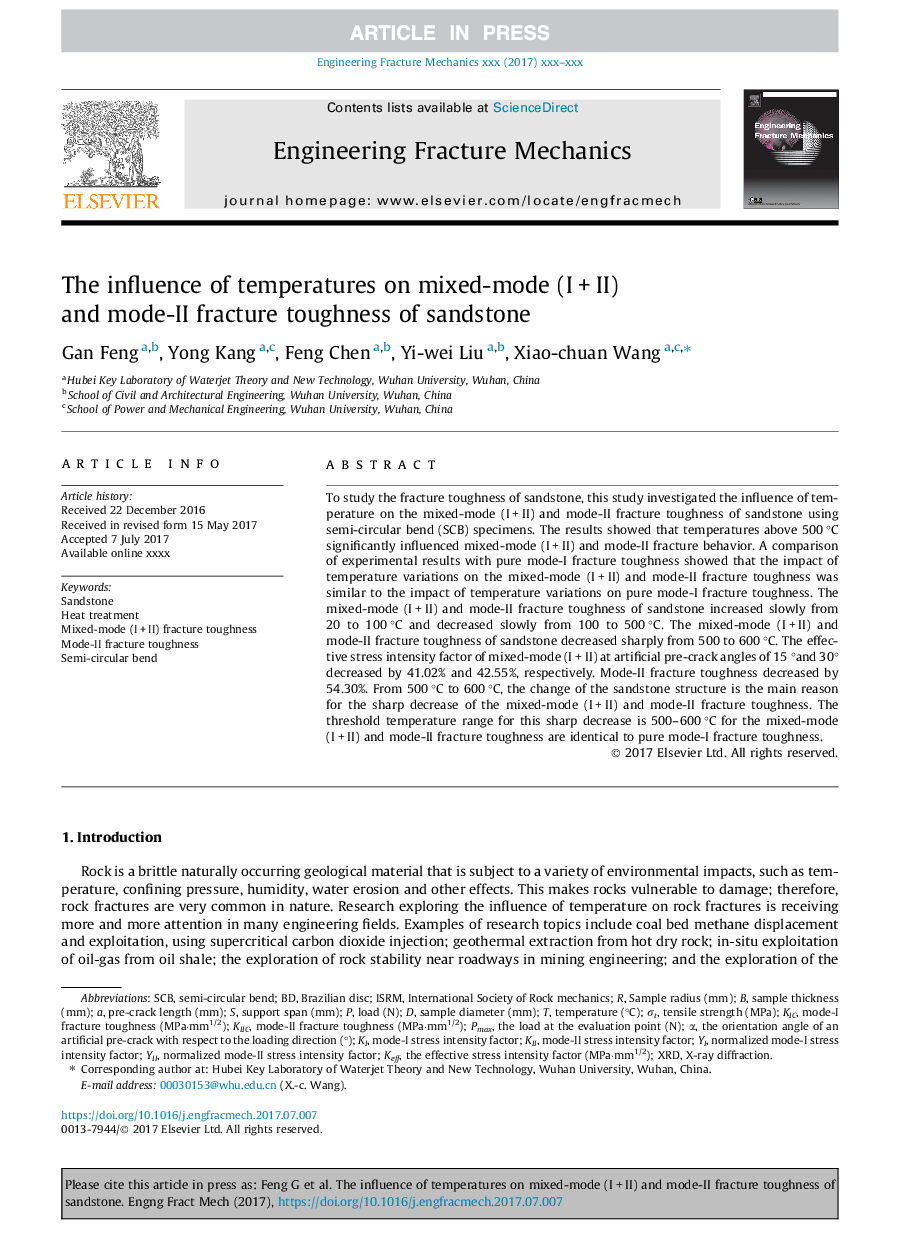| Article ID | Journal | Published Year | Pages | File Type |
|---|---|---|---|---|
| 7169129 | Engineering Fracture Mechanics | 2018 | 13 Pages |
Abstract
To study the fracture toughness of sandstone, this study investigated the influence of temperature on the mixed-mode (I + II) and mode-II fracture toughness of sandstone using semi-circular bend (SCB) specimens. The results showed that temperatures above 500 °C significantly influenced mixed-mode (I + II) and mode-II fracture behavior. A comparison of experimental results with pure mode-I fracture toughness showed that the impact of temperature variations on the mixed-mode (I + II) and mode-II fracture toughness was similar to the impact of temperature variations on pure mode-I fracture toughness. The mixed-mode (I + II) and mode-II fracture toughness of sandstone increased slowly from 20 to 100 °C and decreased slowly from 100 to 500 °C. The mixed-mode (I + II) and mode-II fracture toughness of sandstone decreased sharply from 500 to 600 °C. The effective stress intensity factor of mixed-mode (I + II) at artificial pre-crack angles of 15 °and 30° decreased by 41.02% and 42.55%, respectively. Mode-II fracture toughness decreased by 54.30%. From 500 °C to 600 °C, the change of the sandstone structure is the main reason for the sharp decrease of the mixed-mode (I + II) and mode-II fracture toughness. The threshold temperature range for this sharp decrease is 500-600 °C for the mixed-mode (I + II) and mode-II fracture toughness are identical to pure mode-I fracture toughness.
Keywords
Related Topics
Physical Sciences and Engineering
Engineering
Mechanical Engineering
Authors
Gan Feng, Yong Kang, Feng Chen, Yi-wei Liu, Xiao-chuan Wang,
